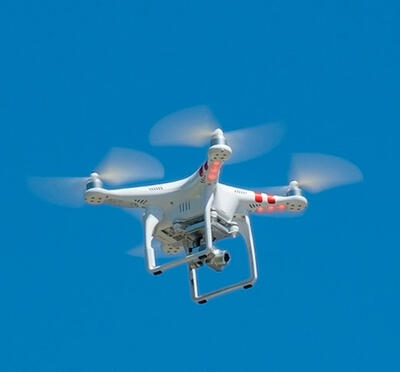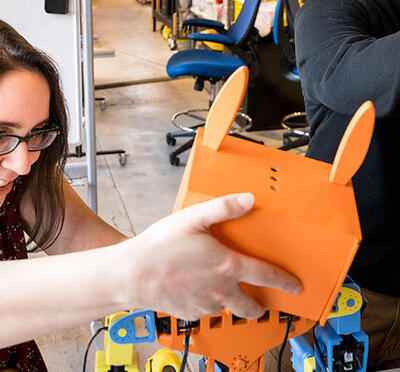The robotics team at Mitkof Middle School in Petersburg, Alaska, competed at the 2025 WPI First Lego League event, an international competition where middle school and grade school students showcase their skills in robotics, research, and teamwork. Along their journey, the five-student team shared experiences and insights with several Oregon State researchers who had developed a relationship with the school.
The tournament, one of several prominent First Lego League competitions held annually, takes place June 13-15 at Worcester Polytechnic Institute near Boston.
The team earned its spot after its ROV, or remotely operated vehicle, took first place in the innovation category at the state championship in Anchorage in February. Other categories at Lego League tournaments include building and programming a robot to accomplish a series of tasks on a special game board.
“We did OK in the programming component,” said Beau Ward, a language arts teacher who serves as the team’s coach. “Combined with our first-place finish in the innovation category, the team placed fourth overall out of 29 teams in Anchorage.” Dustin Crump, who teaches both Spanish and technology, advises the team about programming robots.
Collaborating with Oregon State researchers
The connection with Oregon State began during the 2023-24 academic year, when a few Oregon State researchers met remotely with Mitkof’s seventh grade science class to talk about a variety of topics, including ROVs, which the students were learning about in class, and research at the nearby Le Conte glacier.
Representing the university were Meagan Wengrove, associate professor of coastal and ocean engineering and the John and Jean Loosley Faculty Fellow; doctoral student Nadia Cohen from the College of Engineering; and doctoral student Kaelan Weiss from the College of Earth, Ocean, and Atmospheric Sciences.
“They had so many questions and they were clearly excited about science,” Wengrove said. “I think they appreciated our engagement with their community, and we appreciated their interest in our work.” In the summer of 2024, Wengrove’s team, along with other Oregon State researchers, headed to the glacier to conduct research. Recalling the enthusiasm the students exhibited during their remote exchanges, Wengrove chartered a boat that took more than a dozen students and teachers to the research area near the glacier’s terminus in Le Conte Bay, about 20 miles from Petersburg. Several times during the day, Weiss and Cohen hopped from their motorboat to the charter to visit with the passengers.
“We answered questions and explained what they were seeing, like the robotic boats and the ROVs operating around us,” Weiss said.
“Going to the glacier on the boat was amazing,” said Andi Mihai, an eighth grader who was one of two robotics team members on the charter. “We could see what the cameras on their ROVs saw when they went underwater, and they showed us how they drilled into the ice to take samples. We also noticed that it could be hard to get the ROV attached to the ice to stabilize it.”
Innovative ROV design and future goals
When the next school year started, the robotics team learned that the theme for the upcoming season of Lego League competitions was “Submerged,” so they decided to build an ROV capable of latching onto ice. Over the winter, Cohen and Weiss met with the team by Zoom to discuss the project and offer suggestions.
The team’s cube-shaped ROV is made primarily from PVC pipe and measures about 16 inches on a side. Its most distinctive feature is a pair of arms that fold against the sides of the device. Heavy duty rubber bands, like those used to secure crab pots, hold the arms under tension, so when the arms are released, they swing forward with a lot of speed. Spikes mounted at the end of the arms are designed to grab onto ice.
In early tests, the team used plastic milk jugs to simulate ice. Then, in May, they achieved a breakthrough. During a field test, the robot was carefully maneuvered alongside a small iceberg near the shore. Its arms swung out, caught the ice and held on tight. The team presented a video of their achievement at the Boston competition.
“The judges were very impressed,” Ward said. “The team didn’t win any awards, but their scores were nearly double what they earned at the state competition, and other teams commented on the uniqueness and practicality of the project. The students are addressing real issues that researchers face, and it was exciting for them to talk to Oregon State scientists about the project and how to solve some of the challenges. They were constantly modifying and adjusting things, and I think that process was very valuable.”




